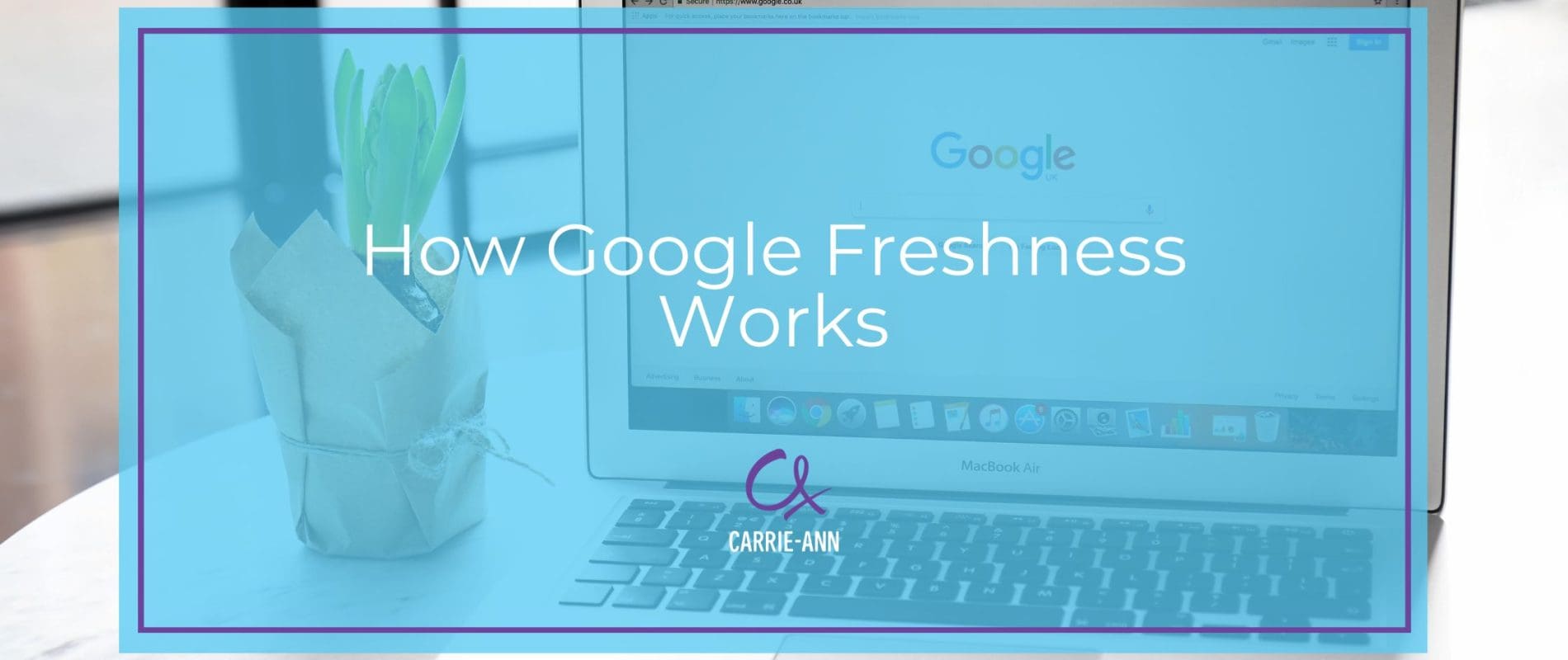
How Google Freshness Works
Google utilises powerful algorithms to determine which websites contain content that is most relevant to the searches its users are making. One of the factors these algorithms consider is how up-to-date the information on a web page is, which is why so many search engine optimisation (SEO) experts recommend updating old content alongside frequently publishing new content.
But is this strategy really that effective?
The answer is: it depends.
After all, Google algorithms are becoming smarter with every update and it now has measures in place that dilute the impact of some of the more popular SEO hacks. So, let’s explore this topic in more detail.
What exactly is Google Freshness?
In 2017, Google implemented a freshness update which added another factor that would help it to determine the relevance of a particular piece of content: time. Don’t forget, Google wants to ensure that it is responding to user intent and as the digital landscape is so fast-paced, often older content isn’t as relevant to changing user demands as newer content is.
But as is the case with many Google updates, some individuals misunderstood the details of the freshness update which has resulted in the spread of information that just isn’t accurate.
Let’s begin by clarifying what Google freshness does NOT mean:
Google does not simply award top ranking positions in search engine results pages (SERPs) to content with the most recent publication date.
Why?
Because every factor that is used to determine publication date has the potential to be inaccurate, particularly information provided via structured markup.
What DOES Google freshness mean?
Essentially Google doesn’t really care whether you continually alter the date of publication on a piece of content. Nor does it care very much how frequently you post.
Now, this doesn’t mean that you should stop updating content altogether. But it does mean that all updates should be made in line with Google’s own webmaster guidelines, which advises you not to artificially update a piece of content. Instead, all updates should contain significant changes that better serve user intent and improve user experience.
Freshness algorithms are used to determine the relevancy of three types of content: recurring events, recent events, and frequently updated topics such as product reviews.
Let’s use the latter as an example here.
If you were to conduct an informational search, such as “how to build a work desk” you would be provided with a mixture of old and new content. However, searching for “best work desk” would be viewed as a transactional search, and therefore, Google will deliver a SERP containing much newer content which uses freshness as a core ranking factor.
It can feel as though Google updates are being introduced left, right and centre. However, keeping on top of new tactics and approaches will ensure that you are in the best possible position to maximise the value of your content and drive better business outcomes.
Ultimately, it is good practice to update content with your audience in mind. So, if something has changed or you are better placed to improve the quality of an existing piece of content, making those alterations is likely to improve your user experience and provide the answers searchers are looking for.